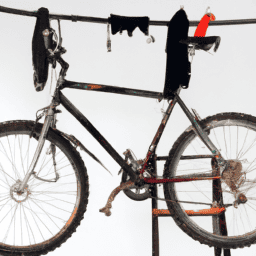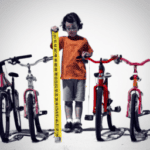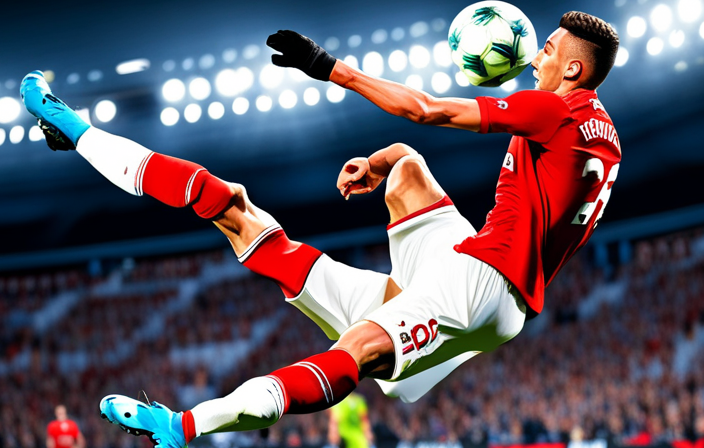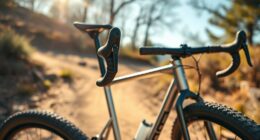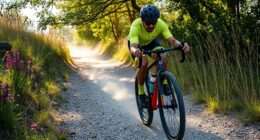For parents, witnessing your child master the skill of bicycle riding is an incredibly joyful moment. However, before they can start pedaling on the sidewalks, it’s essential to select a bike that fits them perfectly.
Choosing the right size bike for a 3-year-old can be tricky, but with some research and guidance, you can ensure a safe and enjoyable riding experience for your child.
First and foremost, it’s important to understand your child’s height. Children grow at different rates, so it’s essential to measure your child’s height before purchasing a bike. Measuring your child’s height will help you determine the appropriate wheel size and seat height for their bike.
Additionally, there are other features to consider, such as the type of brakes, handlebars, and pedals, all of which can impact your child’s comfort and safety while riding.
By taking the time to research and understand the different factors to consider, you can find the perfect bike for your little one to ride and enjoy for years to come.
Key Takeaways
- The recommended wheel size for most 3-year-olds is 12 inches, but a 14-inch bike may be better for taller children.
- A balance bike with 12-inch wheels is recommended for children aged 2 to 4 years old.
- The reach to the pedals and ground is crucial for proper posture, balance, and maneuverability.
- Hand brakes offer more control, faster stopping time, decreased risk of accidents, and more confidence while riding.
Understand Your Child’s Height
You’ll want to measure your child’s height to determine the right size bike. Height measurement is crucial to ensure your child’s safety and comfort while riding their bicycle.
You can use a measuring tape or growth chart to determine your child’s height accurately. When measuring, make sure your child stands straight with their feet flat on the ground and their back against a wall. Use a book or level to ensure their head is straight and to get an accurate measurement.
Once you have their height, use a bike size chart to find the right bike for your child. To determine the wheel size, consider your child’s age and inseam measurement. This information will help you choose the right bike for a comfortable ride.
Determine the Wheel Size
When it comes to choosing the right bike for my three-year-old, I know that determining the wheel size is crucial.
Based on my research and expertise, I’ve learned that the recommended wheel size for most three-year-olds is 12 inches. However, if my child is taller for their age, I may want to consider a 14-inch bike instead.
Recommended Wheel Size for 3-Year-Olds
A 3-year-old’s bicycle wheel size is crucial in ensuring a comfortable and safe ride. It’s important to note that the wheel size varies depending on the child’s age range and the type of bike.
For children aged 2 to 4 years old, a balance bike with 12-inch wheels is recommended. This type of bike has no pedals, allowing the child to focus on learning balance and coordination.
For children who are taller and have more advanced skills, a 14-inch bike may be a better fit. This bike type has pedals and can be used as a transition bike before moving on to a larger bike with gears.
It’s important to consider the child’s height and inseam when choosing a bike with the appropriate wheel size. A bike that is too small or too large can make it difficult for the child to ride and can also be unsafe. Therefore, it’s recommended to take the child to a bike shop to be properly fitted for a bike that is comfortable and safe for them to ride.
Consider a 14-Inch Bike for Taller Children
If your child is taller and more advanced in their biking skills, opting for a 14-inch bike may provide a better fit and smoother transition to a larger bike with gears. Here are some advantages of choosing a 14-inch bike for your 3-year-old:
- The bike will have a larger frame and longer wheelbase, which allows for a more comfortable and stable ride.
- The larger wheel size provides better traction and stability on uneven surfaces, such as gravel or grass.
- The bike will have more advanced features, such as a hand brake and adjustable seat height, which can help prepare your child for a larger, more complex bike in the future.
While a 14-inch bike may be a good option for taller children, there are alternative size options available, such as 12-inch or 16-inch bikes.
It’s important to consider your child’s height and skill level when choosing the right size bike. One way to ensure a proper fit is to check the seat height, which should be adjusted so that your child can sit on the saddle with their feet flat on the ground.
Check the Seat Height
When it comes to choosing the right bike for a 3-year-old, it’s not just about the wheel size. It’s also important to check the seat height to ensure a comfortable reach to the pedals and ground.
Adjusting the seat height can be the difference between a safe and enjoyable ride and a frustrating and uncomfortable experience for the child.
Importance of Comfortable Reach to Pedals and Ground
Ensuring that your little one can comfortably reach the pedals and ground is crucial when choosing the right size bicycle for a 3-year-old. This ensures proper posture, which helps your child balance and maneuver the bike, reducing the risk of accidents. It also allows for a more enjoyable and safe riding experience.
Choosing the right handlebars is important, as they should be easy for your child to grip and maneuver. Pedal adjustment is another important factor to consider when choosing the right size bike. Your child’s feet should be able to comfortably reach the pedals without having to strain or stretch.
If the pedals are too far away, your child may not be able to pedal efficiently or may have trouble stopping the bike. On the other hand, if the pedals are too close, it can cause discomfort and may affect your child’s balance.
Once you have ensured that the reach to the pedals and ground is comfortable, the next step is to adjust the seat height to ensure proper leg extension.
Adjusting the Seat Height
Now that we know how important it is for a child to have a comfortable reach to the pedals and the ground, we should also consider adjusting the seat height. As a bike expert, I’ve seen many parents make the mistake of not adjusting the seat height properly, causing discomfort and possible injury for the child.
To adjust the seat height, follow these steps:
- Loosen the seat clamp bolt under the seat using an Allen wrench.
- Raise or lower the seat to a comfortable height for the child.
- Tighten the clamp bolt securely.
It’s also important to adjust the handlebars to ensure a comfortable reach for the child. And while we’re on the subject of comfort, choosing a comfortable saddle is just as important. A saddle that’s too hard or too soft can cause discomfort and pain for the child.
Remember, a comfortable bike is a safe bike.
Now that we’ve adjusted the seat and handlebars and chosen a comfortable saddle, let’s consider other features to ensure the perfect bike for our little ones.
Consider Other Features
Don’t forget to take into account other features when selecting the right size bicycle for your three-year-old. While adjustable seat heights are important for comfort and safety, hand brakes are another crucial feature to consider. Hand brakes allow your child to quickly and easily stop the bike, giving them more control and confidence while riding.
To emphasize the importance of hand brakes, take a look at the table below:
| No Hand Brakes | Hand Brakes |
|---|---|
| Limited control | More control |
| Slower stopping time | Faster stopping time |
| Increased risk of accidents | Decreased risk of accidents |
| Less confidence while riding | More confidence while riding |
As you can see, hand brakes offer several advantages over bikes without them. When choosing a bike for your child, look for models that include this feature. Additionally, take into account other important features such as color options and brand recommendations. By considering all of these factors, you can ensure that your child has a safe and enjoyable riding experience.
Ensuring a Safe and Enjoyable Riding Experience
As a parent, my main concern is ensuring that my child has a safe and enjoyable riding experience.
That means taking steps to ensure that my child’s helmet fits properly and is worn at all times while riding. It also means providing constant supervision and teaching my child important safety rules, such as staying on designated paths and always looking both ways before crossing a street.
By following these guidelines, I can help my child develop a love for cycling while keeping them safe from harm.
Proper Helmet Fit
Make sure your little one’s helmet fits snugly but comfortably on their head, ensuring proper protection while they ride their new bicycle. Helmet safety is crucial to prevent serious head injury. When purchasing a helmet, make sure it meets safety standards such as the Consumer Product Safety Commission (CPSC) label.
It’s important to also properly fit the helmet. The helmet should sit level on the head and cover the forehead without tilting forward or back. The straps should form a V-shape under the ears and be adjusted to fit snugly, but not too tight. Check that the helmet doesn’t move more than an inch in any direction when pulled. Remember, a helmet that is too big or too small won’t provide the necessary protection.
With a properly fitting helmet, your child can enjoy their new bicycle safely. Now, let’s talk about the importance of supervision and safety rules.
Supervision and Safety Rules
Now that we’ve discussed the importance of finding the right helmet for your child, let’s talk about the importance of supervision and safety rules when it comes to riding a bicycle.
As a parent, it’s crucial to always supervise your child when they’re riding their bike, especially if they’re still learning. Even if your child is an experienced rider, it’s still important to keep an eye on them and make sure they’re following safety rules.
One of the most important safety rules is to always wear the right safety equipment. In addition to a helmet, your child should also wear elbow and knee pads to prevent injuries in case of a fall.
It’s also important to make sure their bike is in good condition and that all the parts are working properly. Finally, make sure your child is riding in a safe area away from traffic and other hazards.
By following these guidelines and rules, you can help ensure your child’s safety while they enjoy the fun and freedom of riding their bike.
Frequently Asked Questions
Are balance bikes a good option for 3-year-olds?
I’ve found that balance bikes can be a great option for 3-year-olds. The pros include improved balance and coordination, and they can later transition to a pedal bike. However, alternatives like tricycles may be better for some children.
Can a 3-year-old ride a bike with training wheels?
Can a 3-year-old ride a bike with training wheels? Yes, it’s a great option for building confidence and developing balance. While balance bikes are also effective, training wheels provide a sense of security. It’s important to choose the right size bike for your child’s comfort and safety.
How often should I check my child’s bike for maintenance?
I check my child’s bike for maintenance every few weeks to ensure it’s safe to ride. Professional checks are also important, especially before and after a season of heavy use. Tips for DIY bike maintenance at home include regularly cleaning the bike, checking tire pressure, and tightening loose bolts.
Is it necessary to wear a helmet while riding a bike at this age?
As a parent, I believe helmet importance cannot be overstated when it comes to safety concerns for young children riding bikes. Research shows that helmets can prevent serious head injuries and should always be worn, no matter the age or skill level of the rider.
What kind of terrain is suitable for a 3-year-old’s bike ride?
When choosing where to bike with a 3-year-old, consider nature trails for fresh air, wildlife spotting, and a peaceful ride. City streets offer convenience, but watch for traffic and hazards. Pros and cons of different environments vary.
Conclusion
So, there you have it – finding the right size bicycle for your 3-year-old child can be a daunting task, but it doesn’t have to be. Understanding your child’s height, determining the wheel size, checking the seat height, and considering other features are all important factors to take into account.
Remember, it’s not just about finding a bike that fits your child, but also ensuring a safe and enjoyable riding experience. One interesting statistic to note is that according to the American Academy of Pediatrics, children should not ride a two-wheeled bicycle without training wheels until they’re at least 5 years old.
This is due to the fact that before the age of 5, children haven’t yet developed the necessary balance and coordination skills to ride a two-wheeled bike safely. So, while it may be tempting to rush your child into riding a big kid bike, waiting until they’re physically and developmentally ready can make all the difference in their safety and enjoyment of the activity.
With these tips and guidelines in mind, you can confidently find the perfect bike for your little one to explore the world on.

